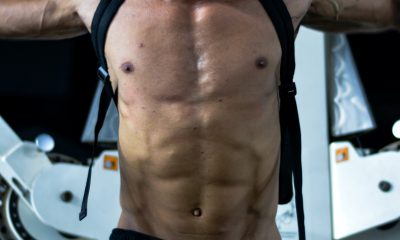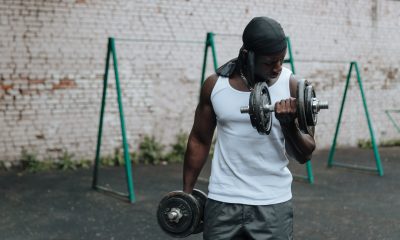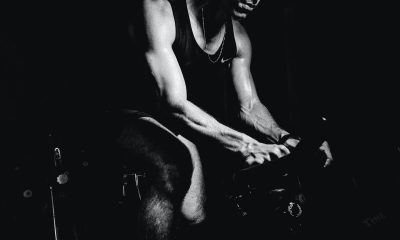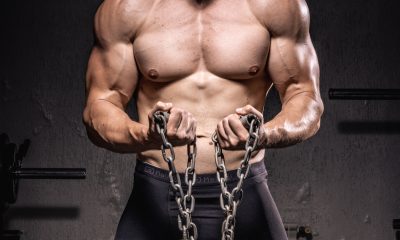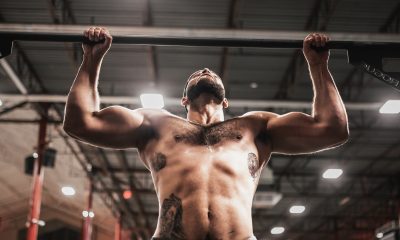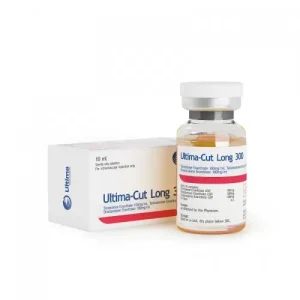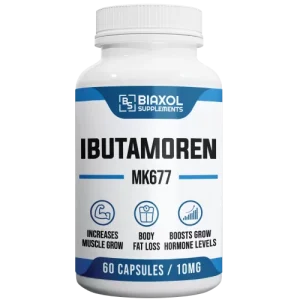Steroids
5 Fitness Tips While Gyms Are Closed
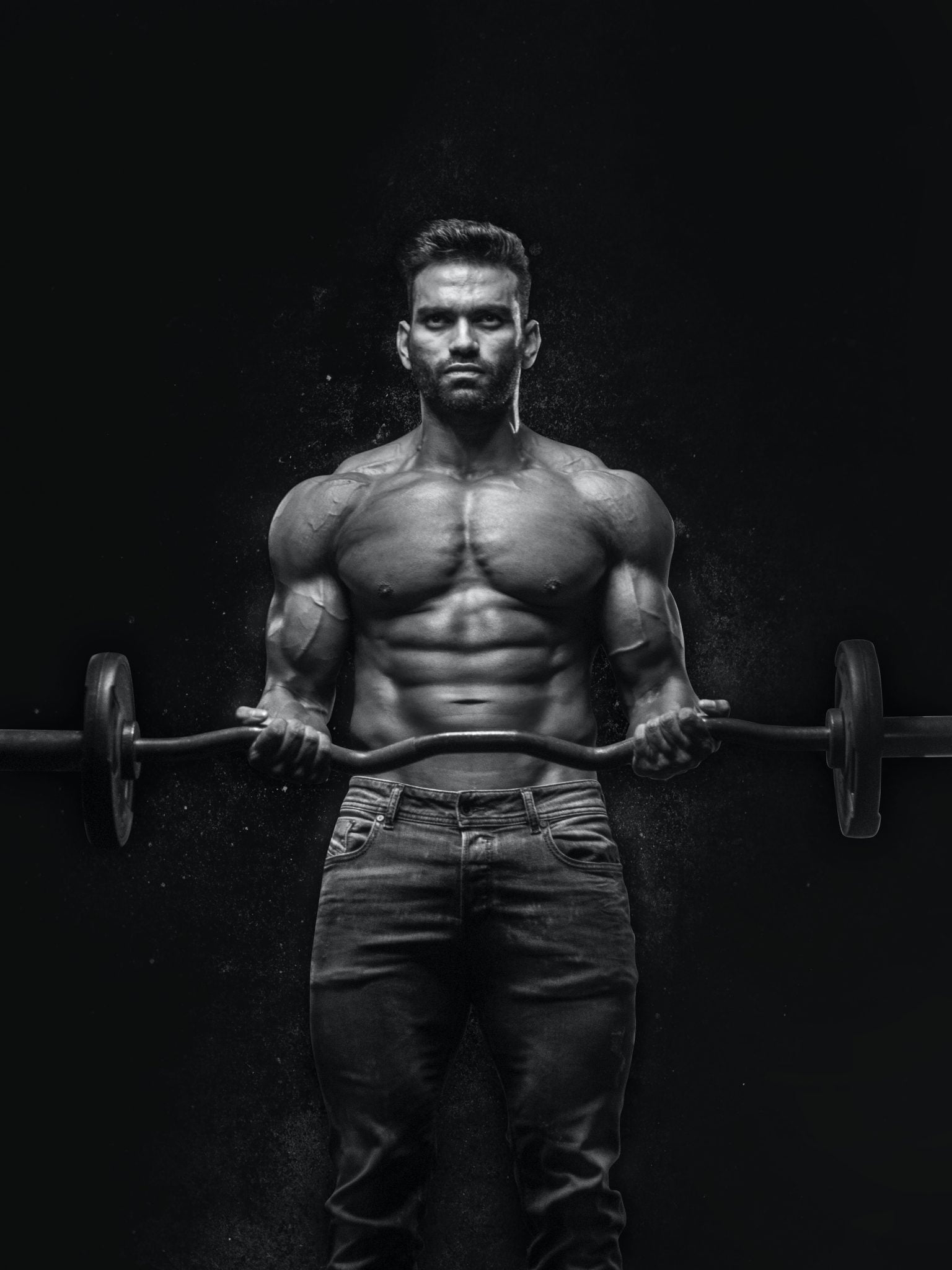
Fitness Tips
COVID-19 still hasn't gone away, and unfortunately, it will stay with us for a while, at least until scientists come up with an effective vaccine. While all areas of life are affected, gyms are one of those places that are hit hard. Because a lot of people exercise in a constricted space, touch the equipment on the same spots, and spend time indoors, in a (poorly) artificially ventilated space. In many countries, gyms are still closed, as they are a perfect place to spread the virus. Sure, maybe they are still open in your country, but going there isn't that smart. Fitness Tips are one of he best things you can know in nowadays.
Plus, you will need to wear a mask and protective gloves, and watch out for other gym goers that come near. Making sure you are keeping a proper distance. All of that is anything but comfortable, which is why people ask how to stay fit while gyms are closed. At least until this COVID-19 nightmare passes.
This article will tell you all about that, giving you 5 Fitness Tips on how to stay fit during the pandemic. Tips are quite simple, and it won't require too much effort or preparation to follow them, only some dedication, so start by reading the article to the end.
First Things First - What Will You Miss The Most
This article is intended for people who don't have a full home gym set up in their garage. If you do - good for you! If you have all the equipment at home, you won't miss anything but hotties exercising around you, and bros to talk about your PRs. But, for the rest of us, things will be much different. Most people go to the gym because of the equipment there. Tones and tones of weights (literally), machines, cardio equipment, all ready to use immediately.

If your #1 goal is to get bigger and stronger, the thing you will miss the most when not working out at the gym will be the weights. Without appropriate free-weight equipment, you will not build strength and size the way you were used to, and you will have to adjust.
Related Article:: 5 Home Gym Essentials To Build A Great Body
Lack Of Adequate Weight Issues
And if you don't have a barbell with the needed weight, your strength lifts will suffer the most. If you don't do squats, deadlifts, and presses, your numbers will drop, and there's no way to avoid that.
However, the good news is that muscle memory exists, and you will be back to where you were as soon as you get back to the gym. Also, if you continue to exercise with what you have, you will prevent muscle decay. Which will also contribute to getting your numbers back to where they used to be.
As for the size, there are more options to keep it (which we will discuss later), but again, without a good old barbell. You can't expect the same amount of gains you had when visiting the gym regularly.
What To Focus On of this Fitness Tips?
Your focus when not visiting the gym should be a bit different - staying fit. While being strong and big is also a part of fitness, now that you don't have access to gym equipment is an excellent time to work on other fitness areas you were lacking.
While strength and size do get the hype, there are other things you can focus on to get fitter - getting leaner, increasing endurance, power, mobility, flexibility, improving nutrition. In the sections below, we will talk about all of them. Giving you ideas that will help you create interesting routines that will keep you busy and make you healthier.
1 Clean Up Your Nutrition - one of the best Fitness Tips
When your main goal is to get as big as possible, and to lift as much as possible, having clean nutrition is not exactly the priority. As a meathead, you are probably looking to get as much fuel as possible. As long as it has protein and calories in it, it's good. The only exception would be the cutting season, where you do watch out what you eat. But, let's face it, you are mostly compensating for poor nutrition by lifting super hard.
However, now that the gym is unavailable, continuing to eat the same way will result in you getting fat. To prevent that from happening, it is a good idea to clean up your eating habits.
Now that you are spending more time home, try to prepare most of your meals yourself. In other words, stay away from junk food. If you are working from home, there is absolutely no reason why you should eat on the street or order delivery from fast-food restaurants. Also, try to ditch soda and sweets too. Opt for cleaner, home-cooked food, at least for the majority of what you eat.
Related Article:: Top 20 Weight Loss Bodybuilding Supplements to Try This Summer
 Also, make sure you keep the relative protein intake high. Switching to clean eating will probably result in eating fewer calories, which is likely to put you in a caloric deficit. To ensure you are preserving muscle mass, eat enough protein, around 1 gram per pound of body weight per day. Meat, eggs, cheese, peanuts but also protein powders are all viable sources to get quality protein. Of course, to preserve muscle mass you need to exercise too; only eating protein alone is not enough.
Also, make sure you keep the relative protein intake high. Switching to clean eating will probably result in eating fewer calories, which is likely to put you in a caloric deficit. To ensure you are preserving muscle mass, eat enough protein, around 1 gram per pound of body weight per day. Meat, eggs, cheese, peanuts but also protein powders are all viable sources to get quality protein. Of course, to preserve muscle mass you need to exercise too; only eating protein alone is not enough.
GOLD WHEY POWDER >> HERE
2 Get Some Essential Equipment
Bodyweight exercises are an excellent way to keep your muscles engaged when you are not able to visit the gym. That makes them a perfect option for home quarantine workouts, but also for traveling. And if you are creative, you can train any muscle group without any equipment. You can use chairs to perform dips, tables to do rows, or door for pull-ups. But, that will only get you so far, and it will be a much better decision to get some >> GYM Essential fitness equipment for home gyms.
 Getting just a pair of heavy dumbbells and a pull-up bar will give you so many workout options, which makes these two pieces of equipment an absolute must. The good news is that you don't need to spend a fortune to get them. Also, if you are really short on funds, getting a pair of used dumbbells is going to be even cheaper. However, visiting garage sales is not exactly the brightest idea during a pandemic.
Getting just a pair of heavy dumbbells and a pull-up bar will give you so many workout options, which makes these two pieces of equipment an absolute must. The good news is that you don't need to spend a fortune to get them. Also, if you are really short on funds, getting a pair of used dumbbells is going to be even cheaper. However, visiting garage sales is not exactly the brightest idea during a pandemic.
Dumbbells >> HERE
Of course, the more money you have, the more equipment you can get. Just be careful about constricted space, as gym equipment tends to be large, exercise machines especially.
3 Focus On Other Training Modalities
 Considering that exercising at home means limited weights, you will need to be creative when creating workout plans. Things are easy at the gym - you just try to lift more weight than the last time. Because you have more weights than you will ever need around, you will always have a challenging number of plates on both sides of the bar.
Considering that exercising at home means limited weights, you will need to be creative when creating workout plans. Things are easy at the gym - you just try to lift more weight than the last time. Because you have more weights than you will ever need around, you will always have a challenging number of plates on both sides of the bar.
Pull-Up Bar >> HERE
At home, things are different. Even if you have a pair of quality heavy adjustable dumbbells, you will probably find the weight lacking at some point, especially on compound movements such as deadlifts, presses, and squats. Plus, you will always be able to lift more with a barbell, as it is a two-handed exercise, which is why relying on weight alone is not a valuable option if you want to continue progressing. So, what are your other options? Here are some:
- Increase volume - the most obvious thing to do when you don't have access to heavy weight is to increase the number of reps and sets you do. You will hardly beat your one-rep deadlift PR when exercising at home. Instead, increase the number of sets and reps you perform, and go closer to failure. More sets will tax your body in a different way, and your workouts will feel harder. However, increasing volume taxes your CNS less than lifting more weight, which will mean better recovery.
- Increase frequency - because lighter weights don't tax the body as much, you will be able to train
 more often. This will keep you busy, keep things interesting, and also burn more calories. Of course, it is still a good idea to spread out your workouts and avoid doing the same muscle groups in consecutive days. But training 5-6 times per week when weights are lower is doable if you plan it right.
more often. This will keep you busy, keep things interesting, and also burn more calories. Of course, it is still a good idea to spread out your workouts and avoid doing the same muscle groups in consecutive days. But training 5-6 times per week when weights are lower is doable if you plan it right.
FLYBIRD >> HERE
- Decrease rest time - when weights are lower, there is absolutely no reason why you should rest as much as you did at the gym. So, forget about 5-minute rest between sets. Three minutes tops is more than enough for most movements. Cutting rest times will make the workouts more challenging, giving your muscles new growth stimulus. So try out different options in the 30 seconds to three-minute range.
- Try supersets and giant sets - another great wat to decrease rest times is to perform supersets and giant sets. That way, you are still working out, but you are resting muscle groups that were active in one exercise while you perform the other. This is a great way to get conditioning as well as to build muscles, all that while saving time.
- Slow down - Another option to make workouts more challenging is to slow down on the eccentric (lowering) part of the lifts. This will hit your muscles hard and will cause a lot of soreness the next day. So make sure you use this tactic sparingly. It is effective, but if you are too sore the next day (or the day after that), you won't be able to work out at all.
- Try isometrics - performing isometric hold in the most challenging portions of exercises (such as the bottom of the squat) is extremely hard and will force your muscles to work overtime. Isometric holds kill inertia, which means no cheating. That will force your muscles to do all the work, and in the most challenging position there is, spurring new growth.
Related Article:: Top 20 Score New GYM Shoes for Under $100
4 Doing Some Mobility Work Won't Kill You
This article is about getting fit, and even though most guys only care about size and somewhat strength, mobility will keep you healthy in the long run. Therefore, use this opportunity, and do some mobility work to fix those imbalances years of neglect created.

Working on your mobility and flexibility will not only make you feel better as it will take care of those nagging pains and clicks you feel often, it will also keep you injury-free. So, by taking care of your body now, you will develop good habits. All of which will help you prevent injuries when you do get back to the gym. And no injuries means more time spent lifting, which will translate to more gains and new personal records. In other words, not only that a little yoga or foam rolling won't kill you. It can help you get bigger and stronger, just indirectly.
Related Article:: The 10 Best Fitness Products for 2020
5 Train Outside
Lastly, we have another part of fitness that meatheads avoid - cardio. Yes, running on a treadmill or cycling on a stationary bike is boring, there's no denying that. That's why you've always made excuses not to do cardio. But, things have changed, and now that you don't go to the gym it's time to work on your cardio by exercising outside.

Walking, jogging, or cycling outside is much more fun than doing the same activities indoors. You get to enjoy nature, spend time on the fresh air, in a corona-safe environment. Of course, all that while burning fat and working on your conditioning. Furthermore, you can stop at a local park and do a few sets on a pull-up bar or dip station. Also, it will help you build muscle mass, making outside exercise a win-win situation. So don't avoid it anymore, lace your shoes, and hit the track today!
Must Read: Training Template by Lift Run Bang
Conclusion
As you can see, there are many ways to stay fit (or get fit) even without gyms. What's more important, you will still continue to exercise regularly, and you won't lose that valuable habit. And as soon as the gyms open, you will get back where you belong. Getting your gains and PRs back where they belong too. And who knows, you might keep some of the habits build during the quarantine too, even after you get back to the gym.
So stay persistent, and make sure you exercise regularly, no matter which type of activity you choose. Let us know in the comments below how you are getting buy during the pandemic? How you are managing to stay fit when gyms are not available.
Bodybuilding
Optimizing Strength and Recovery: A Guide to Bodybuilding by Body Type
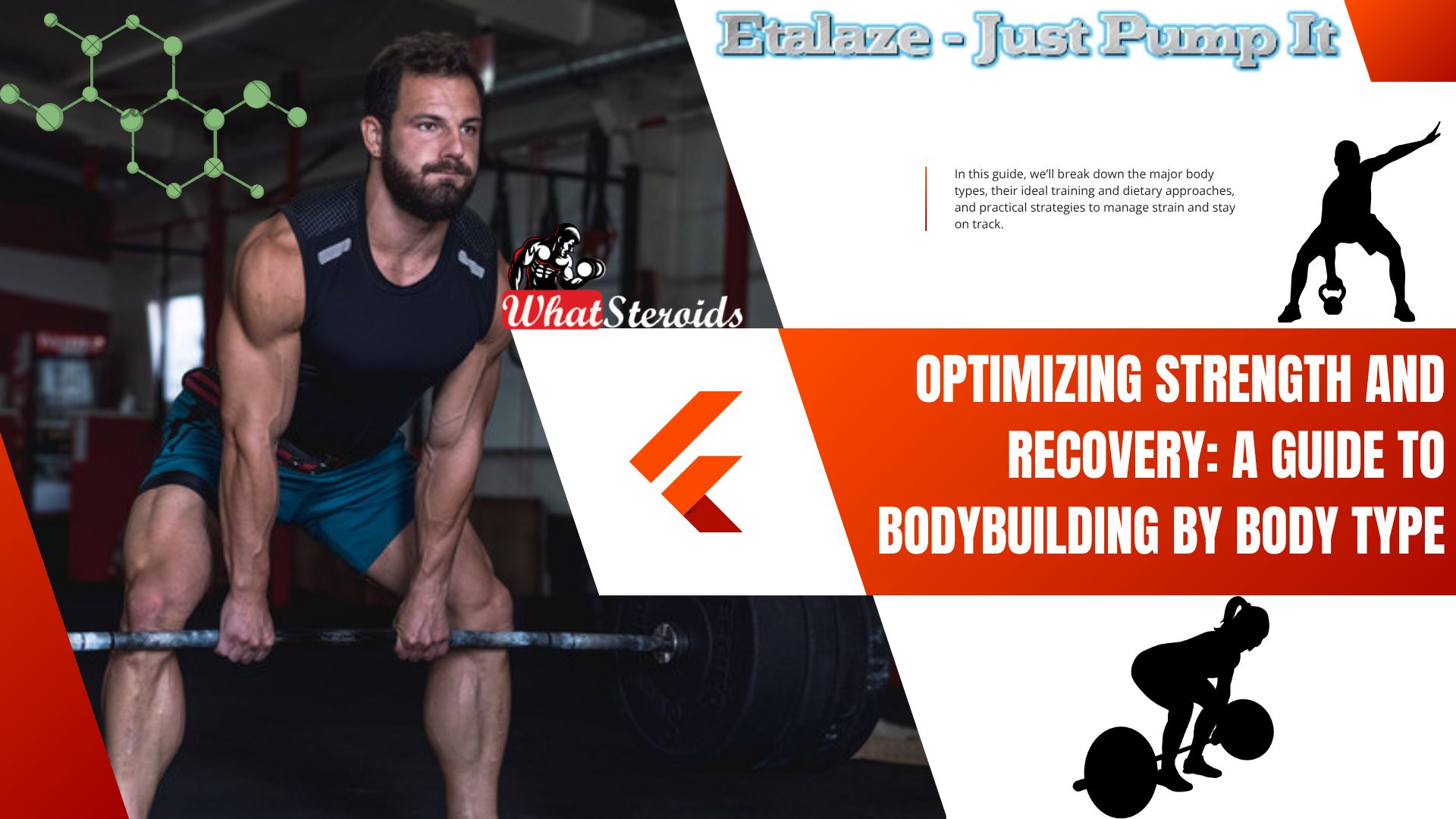
Every body tells a different story—and in bodybuilding, honoring that story is the key to maximizing results. From ectomorphs struggling to pack on mass to endomorphs battling fat retention, training smart means training for your body’s natural tendencies. In this guide, we’ll break down the major body types, their ideal training and dietary approaches, and practical strategies to manage strain and stay on track.
Understanding Your Somatotype
Most people fall somewhere on a spectrum between three classic body types:
1. Ectomorph
Traits: Naturally thin, with a fast metabolism. Gains muscle and fat with difficulty.
Strength Training: Emphasize compound lifts—deadlifts, squats, and presses—with low volume and high intensity. Stick to 3–4 workouts weekly with longer rest intervals.
Reps/Sets: 4–6 reps for 3–5 sets focusing on progressive overload.
Diet: Maintain a high-calorie surplus (15–20% above maintenance) with 50% carbs, 30% protein, and 20% fat. Opt for 5–6 meals daily to maintain an anabolic environment.
Buy Cut Long 300 By Ultima Pharmaceuticals
Recovery Protocol:
Prioritize rest and nutrient-dense intake.
Incorporate creatine, omega-3s, and magnesium.
Minimize cardio to avoid catabolic activity.
2. Mesomorph
Traits: Naturally muscular, moderate metabolism, easily gains muscle.
Strength Training: A hybrid approach with both compound and isolation movements. Train 4–5 times a week.
Reps/Sets: 6–12 reps over 3–4 sets. Include both strength and hypertrophy phases.
Diet: Stay close to maintenance or slight surplus, depending on goal. Use a 40:30:30 macro split (carbs:protein:fat).
Recovery Protocol:
Utilize active recovery days (light cardio, swimming, mobility work).
Schedule deload weeks every 4–6 weeks.
Use massage therapy and contrast showers to reduce soreness.
3. Endomorph
Traits: Broad build, slower metabolism, gains fat easily but also builds strength well.
Strength Training: Opt for metabolic conditioning—supersets, circuits, and high-volume compound lifts. Include 5–6 training sessions per week.
Reps/Sets: 8–15 reps, 3–5 sets to maximize fat oxidation.
Diet: Use a clean-calorie deficit or careful maintenance. Ideal macros: 35% protein, 30% carbs, 35% fat. Emphasize carbs in the morning or post-workout only.
Must Read: Exploring BPC-157 Healing Properties
Recovery Protocol:
Include daily mobility drills and foam rolling.
Use anti-inflammatory nutrients like turmeric, ginger, and omega-3s.
Consider joint support like glucosamine or collagen peptides.
Universal Strategies to Overcome Strain and Fatigue
No matter your build, strain management is key to sustainable progress. Here’s how to recover smarter:
1. Prioritize Quality Sleep
Aim for 7–9 hours of uninterrupted sleep to support hormone regulation and tissue repair.
2. Fuel Recovery with Smart Nutrition
Protein: 1.6–2.2 g/kg body weight daily.
Stay hydrated: Water facilitates nutrient transport and reduces cramping.
Use strategic supplements: Creatine, BCAAs, vitamin D, and magnesium glycinate improve muscle repair and systemic recovery.
3. Use Active Recovery Wisely
Incorporate light movement (e.g., walking, swimming), yoga, or mobility drills to boost blood flow and flexibility.
RICE for Acute Strain
Rest, Ice, Compression, and Elevation—particularly useful within 48 hours of a minor injury.
5. Manage Stress with Breath and Mindfulness
High cortisol impedes recovery. Daily deep breathing, meditation, or cold showers can regulate the nervous system.
Steroid Use by Body Type
Bodybuilders often tailor their choices based on their body type, goals, and tolerance to side effects. Here's a breakdown of commonly used anabolic steroids and how they align with different somatotypes.
Ectomorphs (Hardgainers)
Goal: Maximize muscle mass and strength with minimal fat gain.
Common Steroids:
Dianabol (Methandrostenolone): Rapid mass gain, water retention helps joint support.
Testosterone Enanthate or Cypionate: Foundational for bulking cycles.
Deca-Durabolin (Nandrolone): Promotes joint health and lean mass.
Stacking Strategy: Testosterone + Dianabol + Deca for a classic bulking cycle.
Risks: Estrogenic side effects (bloating, gynecomastia), liver strain (oral compounds).
Buy Boldenone Undecylenate 250mg/ml by ZPHC
Mesomorphs (Naturally Muscular)
Goal: Enhance muscle definition, strength, and vascularity.
Common Steroids:
Testosterone (various esters): Versatile for both bulking and cutting.
Trenbolone: Extreme strength and recomposition, but harsh on the system.
Winstrol (Stanozolol): Hardens muscles and reduces water retention.
Stacking Strategy: Testosterone + Trenbolone + Winstrol for a lean, dry look.
Risks: Cardiovascular strain, aggression, liver toxicity (Winstrol)2.
Endomorphs (Prone to Fat Gain)
Goal: Cut fat while preserving lean mass.
Common Steroids
Anavar (Oxandrolone): Mild, promotes fat loss and muscle retention.
Winstrol: Enhances definition and vascularity.
Masteron (Drostanolone): Anti-estrogenic, ideal for cutting cycles.
Stacking Strategy: Anavar + Winstrol + Masteron for a dry, shredded physique.
Risks: Joint dryness, cholesterol imbalance, androgenic effects.
Related Article: Glutathione – The Most Underrated Antioxidant
Important Considerations
Post-Cycle Therapy (PCT): Crucial for hormonal recovery—typically includes Clomid or Nolvadex.
Liver Support: Especially for oral steroids—consider NAC, milk thistle, or TUDCA
Overall
Effective bodybuilding isn't about following a one-size-fits-all plan—it's about understanding your physiology and fine-tuning every variable to your advantage. Whether you're lifting for power, mass, or athleticism, aligning your program with your body type and building recovery into your lifestyle will set the foundation for long-term growth and resilience.
Bodybuilding
Fitness Lessons from A Navy Seal’s Training Routine
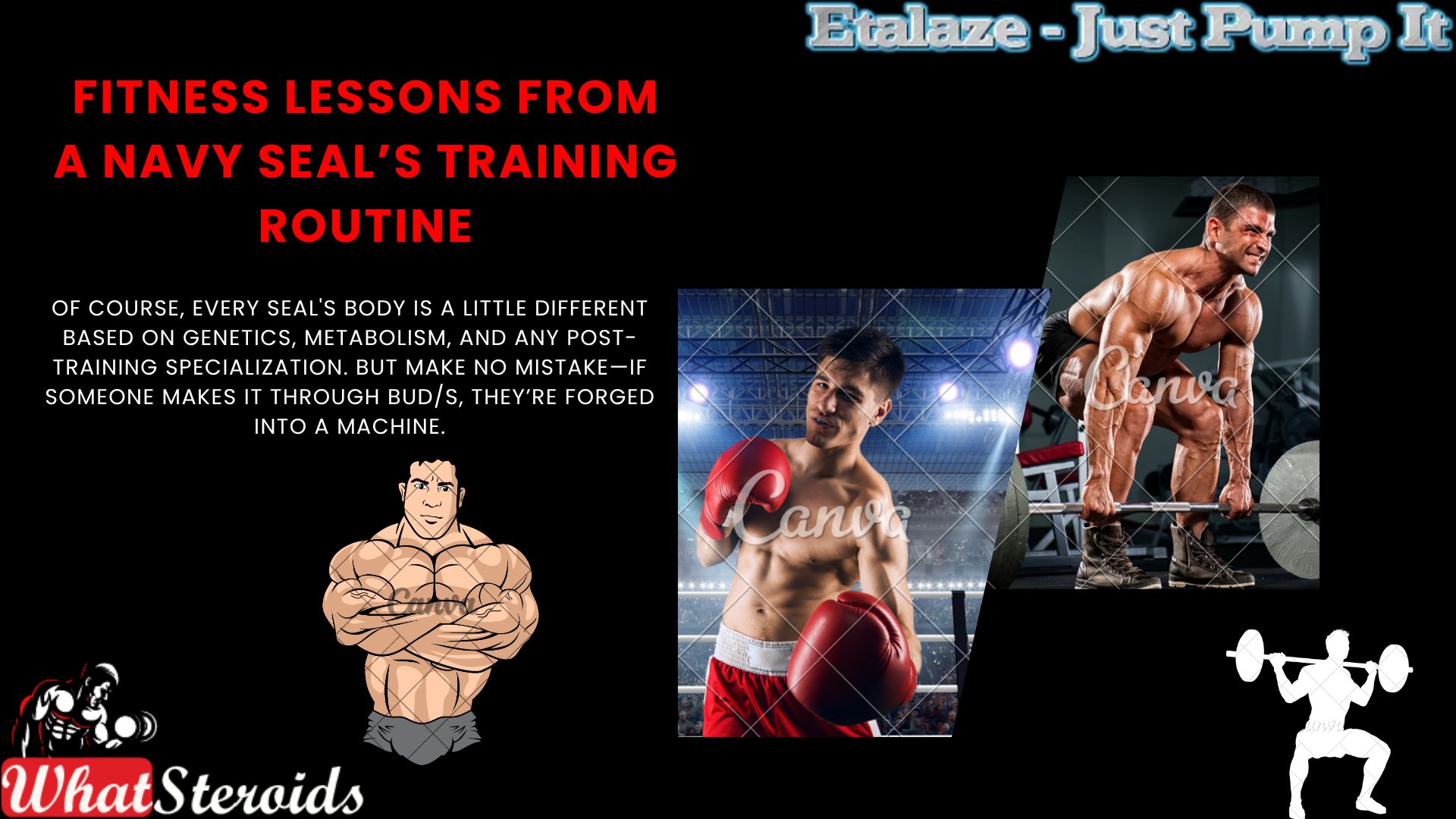
Navy SEAL training is designed to forge elite tactical athletes. It’s not your average gym program; it’s a brutal blend of strength, endurance, agility, and mental resilience training that sculpts a body to handle anything from long swims and ruck marches to hand-to-hand combat.
Physically, SEAL candidates go through:
- High-rep bodyweight training (push-ups, pull-ups, sit-ups)
- Running and rucking (often with weighted gear)
- Swimming and water confidence drills
- Weight training that builds functional strength, not just aesthetics
The result? SEALs tend to develop lean, muscular, and highly conditioned physiques. Not necessarily like bodybuilders—but more like Olympic decathletes: built for performance, with a low body fat percentage and exceptional cardiovascular fitness.
Of course, every SEAL's body is a little different based on genetics, metabolism, and any post-training specialization. But make no mistake—if someone makes it through BUD/S, they’re forged into a machine.
Click Here to Buy Ibutamoren MK677 by Biaxol
Weekly Navy SEAL Training Protocol (Pre-BUD/S Phase)
1. Cardiovascular Conditioning
2 Long Slow Distance (LSD) sessions: One run, one swim. These build aerobic endurance (e.g., 4–6 miles running, 1,000–2,000 meters swimming).
1 Long Interval session: Alternating fast-paced efforts with recovery (e.g., 4×800m run or swim intervals).
1 Short Interval session: High-intensity bursts (e.g., 10×100m sprints or swim sprints).
Must Read: A Proper Approach to Buying Steroids Online
2. Strength & Calisthenics
2 Full-body strength sessions: Focus on compound lifts (deadlifts, squats, presses) and injury prevention.
4–5 Calisthenics routines: High-rep push-ups, pull-ups, sit-ups, dips, flutter kicks—often circuit-style.
3. Core & Mobility
4–5 Core sessions: Planks, leg raises, Russian twists, and dynamic trunk work.
Daily flexibility/mobility work: Stretching, foam rolling, and joint prep to stay injury-free.
4. Water Confidence & Skills
2–3 swim sessions: Including side-stroke technique, underwater swims, and drown-proofing drills.
Treading water, buddy breathing, gear retrieval: Builds calm under pressure.
5. Mental Toughness & Recovery
Cold exposure, sleep deprivation drills, and team-based challenges: Simulate stress and build grit.
Active recovery days: Light cardio, yoga, or hiking to promote recovery without stagnation.
This structure is scalable—candidates ramp up intensity over 26 weeks to prepare for BUD/S. It’s not about looking jacked; it’s about being unbreakable.
Diet and Nutrition Framework
Navy SEALs follow a strategic, performance-driven diet that fuels their extreme physical and mental demands. It’s not a trendy meal plan—it’s a calculated system built around macronutrient balance, nutrient timing, and whole-food quality.
Here’s a breakdown of their typical daily and weekly dietary structure based on SEAL prep guides and military nutrition protocols2:
Daily Nutrition Framework
Calories: 3,000–3,500 kcal/day (adjusted for training intensity and body size)
Macronutrient Split
50% Carbohydrates – for sustained energy
30% Protein – for muscle repair and immune support
20% Fats – for hormone balance and long-term fuel
Meal Timing
Pre-workout: Complex carbs + moderate protein (e.g., oatmeal + eggs)
Post-workout: Fast-digesting carbs + lean protein (e.g., banana + whey shake)
Every 3–4 hours: Balanced meals to maintain energy and recovery.
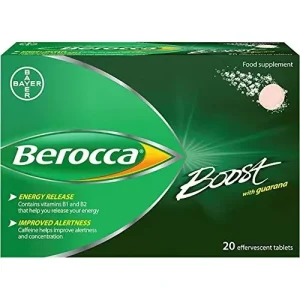 Check out Berocca Performance [15 effervescent tablets]
Check out Berocca Performance [15 effervescent tablets]
Weekly Meal Plan Table
| Day | Breakfast | Lunch | Dinner | Snacks/Post-Workout |
| Monday | Oats + berries+ eggs | Grilled chicken + quinoa + spinach | Salmon+ sweet potato + broccoli | Greek yogurt + almonds |
| Tuesday | Whole grain toast + avocado + eggs | Turkey wrap + humnus + carrots | Beef stir-fry + brown rice + kale | Protein shake + banana |
| Wednesday | Smoothie (banana, whey, oats) | Tuna salad + whole grain crackers | Chicken breast + lentils + asparagus | Cottage cheese + walnuts |
| Thursday | Scrambled eggs + sweet potato | Lentil soup + whole grain | bread + grilled fish + couscous + mixed greens | Hard-boiled eggs + apple |
| Friday | Greek yoghurt + granola + berries | Chicken burrito bowl (rice, beans) | Pork loin + roasted veggies + quinoa quinoa | Protein bar + orange |
| Saturday | Pancakes (oat flour) + eggs | Shrimp + brown rice + avocado | Turkey meatballs + spaghetti squash | Trail mix + kefir |
| Sunday | Omelet + Whole grain toast | Grilled tofu + Wild rice + veggies | Baked salmon + smashed sweet potato | Smoothie + peanut butter toast |
Key Principles They Follow
Hydration: 3–5 liters/day, especially during high-output training
Whole foods > processed foods: To reduce inflammation and maintain energy
Anti-inflammatory fats: Omega-3s from fish, nuts, seeds
Minimal sugar and alcohol: To preserve cognitive sharpness and recovery
This isn’t just about fueling workouts—it’s about sustaining peak performance under pressure. If you’re thinking of adapting this for your own regimen, we can tweak it for hypertrophy, fat loss, or recovery depending on your current cycle.
Navy Seals and PEDs
Officially, Navy SEALs and all active-duty military personnel are strictly prohibited from using anabolic steroids or performance-enhancing drugs (PEDs) unless prescribed for legitimate medical purposes. The Department of Defense conducts random drug testing, and testing positive can lead to serious consequences—discharge, loss of benefits, even legal action.
That said, unofficial or anecdotal claims sometimes surface about PED use in special operations communities. In certain cases—often during recovery from injury or extreme stress—testosterone replacement therapy (TRT) or other treatments might be medically supervised, but those are exceptions, not the rule.
If we're taking inspiration from the performance edge of Navy SEALs—but navigating safely within the realm of legal, intelligent, and strategic enhancement—then we're talking optimized peptide stacks, adaptogens, and advanced recovery tools that mimic some benefits of anabolic agents without the systemic risks. Here's your comprehensive overview:
I. Goal-Oriented Peptide and SARM Alternatives
These compounds support muscle retention, fat loss, recovery, and injury prevention, similar to what anabolic steroids promise—just with a smarter safety margin.
1. IGF-1 LR3
- Function: Mimics growth hormone effects; enhances muscle protein synthesis, satellite cell activation, and recovery.
- Stack Use: Often cycled 4–6 weeks; ideal with resistance training phases.
- Notable Edge: Boosts lean gains without androgenic sides.
2. BPC-157 (Body Protection Compound)
- Function: Accelerates tendon, ligament, and gut healing.
- Use Case: Injury rehab or proactive joint/tissue protection under high workload.
- Stack Suggestion: Pair with collagen peptides, taurine, or TB-500 for systemic support.
3. TB-500 (Thymosin Beta-4)
- Function: Enhances tissue regeneration, flexibility, blood flow.
- Use: Injured areas or systemic fatigue from overtraining.
- Best Timing: Post-cycle therapy or in high-impact training blocks.
4. CJC-1295 + Ipamorelin (GHRH + GHRP Stack)
- Function: Stimulates natural GH pulses—leading to improved sleep, recovery, and fat metabolism.
- Duration: 8–12 weeks, best taken nightly.
- Stacking Tip: Combine with IGF-1 LR3 or BPC for holistic recovery and body composition support.
5. MK-677 (Ibutamoren) – SARM Alternative
- Function: Oral GH secretagogue that boosts IGF-1/GH axis.
- Pros: Increases appetite, enhances sleep, and supports hypertrophy.
- Caution: Can promote mild insulin resistance if misused long-term—best used in cutting-edge recomp strategies.
6. Cardarine (GW-501516) – Fat Oxidation & Endurance
- Function: Boosts endurance and fat metabolism without muscle loss.
- Niche Use: Ideal for Navy SEAL-style training where stamina is paramount.
- Safety Insight: Not a SARM, though sometimes labeled as one—best used in short durations (4–6 weeks).
Explore: Tips on How to Store Peptides and HGH
II. Adaptogenic & Natural Edge Enhancers
Used by elite operators, athletes, and even astronauts.
Rhodiola Rosea
- Function: Reduces cortisol, enhances endurance and focus under stress.
Ashwagandha (KSM-66)
- Function: Increases testosterone naturally, improves strength and sleep.
Lion’s Mane + Cordyceps
- Function: Boosts neural plasticity (Lion’s Mane) and VO₂ max (Cordyceps).
III. Tactical Recovery Tools
Used heavily in high-impact professions to mimic PED-level recovery.
- Red Light Therapy: Muscle regeneration, collagen production, cognitive performance.
- Cold-Water Immersion (CWI): Reduces inflammation, boosts mitochondrial function.
- Electrostimulation Devices (like Compex): For active recovery and injury prevention.
- Sleep protocols + GABA precursors (Glycine, L-Theanine, Magnesium): Natural performance enhancers often overlooked.
Bonus: Smart Supplementation
- Creatine Monohydrate: Still king for strength, cognition, and recovery.
- Essential Amino Acids (EAA): Daily support for muscle repair, especially during calorie deficits.
- Omega-3 (DHA/EPA): Anti-inflammatory and cognitive protection.
Cycle Protocol for Maximum Gains
Phase I: Foundation & Recovery (Weeks 1–4)
Peptides:
Phase II: Tactical Mass & Stamina (Weeks 5–10)
Peptides/SARMs:
Phase III: Resilience & Recomp (Weeks 11–14)
Peptides:
Post-Cycle & Transition (Weeks 15–16)
Taper off all peptides
Overall
Navy SEAL bodybuilding is less about aesthetics and more about forging a physique that thrives under extreme physical and mental stress. Their training revolves around high-volume calisthenics, endurance runs, functional strength work, swim conditioning, and mental resilience drills—sculpting lean, powerful bodies built for performance, not posing. Nutritionally, SEALs rely on a high-calorie, whole-food diet emphasizing complex carbs, lean proteins, healthy fats, and rigorous hydration to fuel recovery and stamina. Meal timing supports performance and recovery, often incorporating nutrient-dense foods like oats, eggs, sweet potatoes, salmon, and greens—engineered to sustain peak output in any environment.
Related Article: Ultimate Guide to Primal Movements
Bodybuilding Products
Exploring BPC-157 Healing Properties

BPC-157 is a synthetic peptide derived from a protein found in the stomach, known for its remarkable healing properties. It has gained popularity among bodybuilders due to its ability to accelerate muscle recovery, repair tendons and ligaments, and reduce inflammation.
Key Benefits for Bodybuilders
Faster Recovery: Improves blood flow to damaged muscles, speeding up healing.
Injury Support: Strengthens connective tissues, reducing the risk of injuries.
Muscle Growth: Enhances collagen production, aiding in muscle repair and hypertrophy.
Pain Reduction: Has analgesic effects by elevating dopamine and serotonin levels.
Anti-Aging & Well-being: Supports tissue regeneration and overall health.
Must Read: New Arrival Workout Equipment on Amazon for the Disabled
How It Works
BPC-157 promotes angiogenesis, the formation of new blood vessels, which enhances nutrient delivery to injured tissues. It also blocks inhibitory growth factors, allowing for faster wound healing, especially in tendons.
Dosage & Usage
Most users take 200-400 mcg per day, typically in cycles of 4-6 weeks. It can be administered orally or via injection, with injections often preferred for localized healing.
Potential Risks Associated With BPC-157
BPC-157 is widely praised for its healing properties, but its long-term safety remains uncertain due to limited human studies. Here are some potential risks:
Possible Side Effects
Headaches – you may experience mild headaches, especially when first starting.
Injection Site Reactions – Swelling, redness, or irritation can occur if injected repeatedly in the same area.
Digestive Issues – Nausea or vomiting may happen, particularly with oral administration.
Fatigue & Lethargy – Some users experience temporary tiredness.
Blood Pressure Changes – BPC-157 may influence blood pressure, though effects vary.
Hot Flashes – Due to its impact on blood vessel dilation, some users report warmth or flushing.
Regulatory Concerns
Not FDA-Approved – BPC-157 is classified as an experimental peptide, meaning its safety profile is not fully established.
Limited Human Trials – Most studies focus on animal models, leaving gaps in understanding its effects on humans.
Buying BPC-157 Online
 Buy BPC 157 10mg by Magnus Pharma
Buy BPC 157 10mg by Magnus Pharma
There are multiple online outlets selling BPC-157, but the quality varies significantly. Some of the more frequently mentioned sources include Peptide Sciences and Canada Peptide, among others.
How to Assess Quality
Purity & Testing – Look for vendors that provide HPLC (High-Performance Liquid Chromatography) testing to confirm purity.
Reputation & Reviews – Check forums like Reddit’s Peptides community for user experiences.
Source & Manufacturing – Prefer vendors that source from reputable labs rather than unknown suppliers.
Packaging & Stability – Ensure proper lyophilized (freeze-dried) storage to maintain peptide integrity.
Customer Support & Transparency – Reliable vendors provide batch testing results and clear product descriptions.
Here are some recommended vendors for BPC-157 that align with bodybuilding goals:
1. Explicit Supps
Reputation: Well-known in the bodybuilding community.
Quality Assurance: Uses independent lab testing to ensure purity.
Customer Service: Strong support and fast shipping.
Pricing: Competitive rates without compromising quality.
2. Evolve Medical Group
Specialization: Offers peptide therapies tailored for muscle recovery.
Muscle Growth Focus: Provides expert guidance on BPC-157 usage.
Medical Backing: Works with professionals to ensure safe administration.
3. Elive Health & Wellness
Comprehensive Approach: Focuses on muscle recovery and performance.
Stacking Advice: Helps users combine BPC-157 with other peptides.
Consultation Services: Offers personalized peptide therapy.
BPC-157 Stacking Ideas
Stacking BPC-157 with other peptides can enhance recovery, muscle growth, and overall performance. Here are some effective combinations:
1. BPC-157 + TB-500 (Tissue Repair & Recovery)
- Why? TB-500 promotes cell migration and angiogenesis, complementing BPC-157’s healing effects.
- Best for: Tendon, ligament, and muscle injuries.
- Dosage: BPC-157 (250-500 mcg/day) + TB-500 (2-5 mg/week).
2. BPC-157 + CJC-1295 + Ipamorelin (Muscle Growth & Recovery)
- Why? CJC-1295 and Ipamorelin boost growth hormone release, accelerating muscle repair.
- Best for: Muscle hypertrophy and recovery post-training.
- Dosage: BPC-157 (250-500 mcg/day) + CJC-1295 (100 mcg/day) + Ipamorelin (100 mcg/day).
3. BPC-157 + GHK-Cu (Skin & Joint Health)
- Why? GHK-Cu enhances collagen production, improving skin and joint health.
- Best for: Joint pain, skin elasticity, and anti-aging.
- Dosage: BPC-157 (250-500 mcg/day) + GHK-Cu (2-5 mg/week).
4. BPC-157 + MK-677 (Recovery & Sleep Optimization)
- Why? MK-677 boosts IGF-1 and growth hormone, improving sleep and recovery.
- Best for: Deep recovery, muscle growth, and fat loss.
- Dosage: BPC-157 (250-500 mcg/day) + MK-677 (10-25 mg/day).
- 1. General Timing Guidelines
- Morning: Best for peptides that enhance metabolism and recovery (e.g., MK-677, CJC-1295).
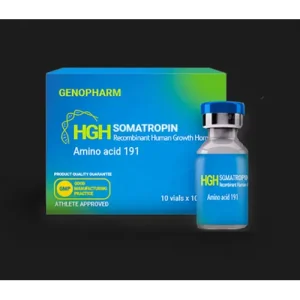 Click Here to Buy Genopharma HGH 100iu Kit
Click Here to Buy Genopharma HGH 100iu Kit
To maximize the benefits of BPC-157 and its stacked peptides, timing and cycling play a crucial role. Here’s how to structure your regimen effectively:
General Timing Guidelines
Morning: Best for peptides that enhance metabolism and recovery (e.g., MK-677, CJC-1295).
Pre-Workout: Ideal for peptides that boost performance (e.g., Ipamorelin).
Post-Workout: BPC-157 works best after training to accelerate muscle repair.
Before Bed: Peptides that stimulate growth hormone (e.g., CJC-1295 + Ipamorelin) should be taken 2 hours after the last meal.
Related Article: Tips on How to Store Peptides and HGH
Cycling Strategies
Standard Cycle: 4-6 weeks on, followed by 2-4 weeks off to prevent desensitization.
Advanced Recovery Cycle: 8-12 weeks on, followed by 4 weeks off for severe injuries.
Maintenance Cycle: 2-3 weeks on, followed by 1-2 weeks off for long-term joint health.
Example Stacking Schedule
| Peptide Stack | Timing | Cycle Length |
| BPC-157 + TB500 | Post workout | 6-8 Weeks |
| BPC-157 + CJC-1295 + Ipamorelin | Before bed | 4-6 Weeks |
| BPC-157 + MK-677 | Morning | 8-12 Weeks |
| BPC-157 + GHK-Cu | Evening | 6 Weeks |
Alternatives to BPC-157
Here are 10 alternatives to BPC-157 that offer similar benefits for healing and recovery:
Pentadeca Arginate (PDA) – A peptide structurally similar to BPC-157, with one amino acid substitution, showing promising results.
Thymosin Beta-4 (TB-500) – Known for its regenerative properties, particularly in tissue repair and inflammation reduction.
GHK-Cu (Copper Peptide) – Supports wound healing, collagen production, and anti-inflammatory effects.
Epitalon – A peptide that promotes cellular regeneration and longevity.
CJC-1295 + Ipamorelin – A combination that enhances growth hormone release, aiding recovery and muscle repair.
Selank – A neuropeptide with anti-inflammatory and healing properties.
LL-37 – An antimicrobial peptide that also supports tissue healing.
KPV Peptide – Known for its anti-inflammatory effects and gut healing potential.
Body’s Natural Healing Mechanisms – Traditional therapies like physical therapy, rehabilitation exercises, and anti-inflammatory medications can serve as alternatives.
BPC-157 Topical Formulations – Some skincare products include BPC-157, though their effectiveness is uncertain
Overall
BPC-157 has emerged as a powerful peptide for bodybuilders seeking accelerated recovery, muscle repair, and overall performance enhancement. Its ability to stimulate angiogenesis, collagen production, and anti-inflammatory pathways makes it a key player in injury prevention and rehabilitation. However, while anecdotal evidence and animal studies support its benefits, human trials remain limited, raising questions about its long-term safety. Choosing high-quality sources, optimizing stacking with complementary peptides like TB-500 or CJC-1295, and following structured cycling protocols can maximize its effectiveness while minimizing risks. As research continues, bodybuilders should balance its potential advantages with careful monitoring and informed decision-making to ensure safe and sustainable use. 
-

 Bodybuilding Products1 year ago
Bodybuilding Products1 year agoTelmisartan In Bodybuilding: An Expert’s Advice
-

 Nutrition2 years ago
Nutrition2 years agoEverything Nutritional Food: What’s Too Much Or Too Little
-

 Anabolic Steroids12 months ago
Anabolic Steroids12 months agoJoint Stiffness: How to Manage It While on AAS
-

 Steroids1 year ago
Steroids1 year agoAnadrol Cycle: Benefits, Doses, Alternatives, etc.
-

 Bodybuilding11 months ago
Bodybuilding11 months agoPrimal Movements: Our Ultimate Guide for Maximum Results
-

 Bodybuilding2 years ago
Bodybuilding2 years agoChia Seeds in A Bodybuilder’s Diet: An Expert’s Advice
-

 Bodybuilding11 months ago
Bodybuilding11 months agoHow Effective is Bone Broth for Recovery?
-

 Steroids1 year ago
Steroids1 year agoOmnitope (Oxytocin)
-

 Steroids12 months ago
Steroids12 months agoSleeping Positions for Effective Muscle Recovery
-

 Bodybuilding1 year ago
Bodybuilding1 year agoHow Much Is Too Much Cardio? Understanding Heart Rate Zones
-

 Bodybuilding11 months ago
Bodybuilding11 months ago2nd Edition of Natural Bodybuilding Competition Facts
-

 Bodybuilding2 years ago
Bodybuilding2 years agoCalorie Dumping: A Bodybuilder’s Guide
-

 Steroids7 months ago
Steroids7 months agoOstarine For Beginners: The Ultimate Guide
-

 Bodybuilding11 months ago
Bodybuilding11 months agoAre Nootropics a Better Option to AAS?
-

 Bodybuilding1 year ago
Bodybuilding1 year agoDemystifying Hypertrophy Training
-
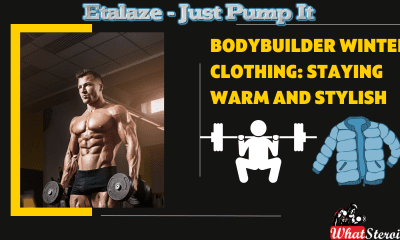
 Steroids8 months ago
Steroids8 months agoBodybuilder Winter Clothing: Staying Warm and Stylish
-

 Bodybuilding8 months ago
Bodybuilding8 months agoTop Video Games for Bodybuilders in 2025
-

 Steroids6 months ago
Steroids6 months agoTips on How to Store Peptides and HGH
-
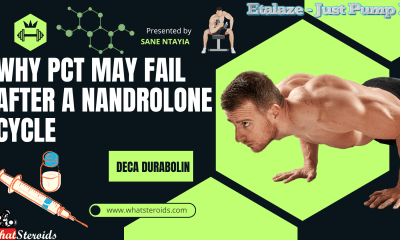
 Steroids5 months ago
Steroids5 months agoWhy Post-Cycle Therapy (PCT) Fails After a Nandrolone Cycle
-
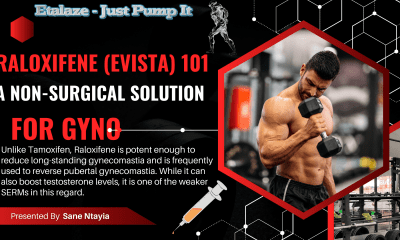
 Steroids4 months ago
Steroids4 months agoRaloxifene (Evista) 101: A Non-Surgical Solution for Gyno
-
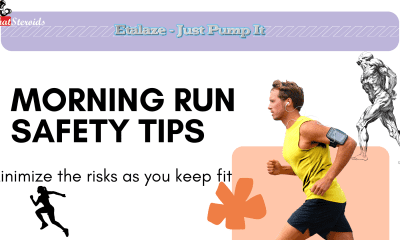
 Beginners8 months ago
Beginners8 months ago14 Morning Run Safety Tips for Bodybuilding and Fitness
-

 Steroids7 months ago
Steroids7 months agoGlutathione – The Most Underrated Antioxidant
-

 Beginners2 years ago
Beginners2 years agoTren Cycle for Beginners
-

 Anabolic Steroids2 years ago
Anabolic Steroids2 years agoLegality of Anabolic Steroids In Latin America
-
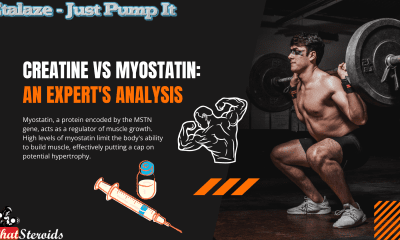
 Steroids4 months ago
Steroids4 months agoCreatine vs Myostatin: An Expert’s Analysis


